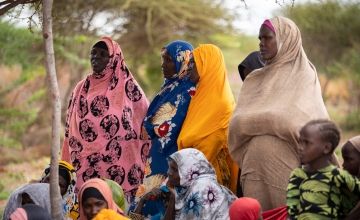
Knowledge Hub
Climate change is an issue caused by a multitude of factors, and there is a wide range of solutions to combat it. These include technological, economic, natural and political solutions. Ultimately, the fight against climate change is one that we all need to be involved with, and support in any way we can.
Solutions to prevent further warming
Nature based solutions

Nature based solutions (also known as natural climate solutions) work with natural environments to help people adapt to the effects of change and disasters. They involve conserving, restoring, or better managing ecosystems to remove carbon dioxide (CO2) from the atmosphere.
Techniques to achieve this include:
- Avoiding emissions through protecting landscapes to limit deforestation.
- Restoring ruined habitats by bringing ecological diversity into landscapes dominated by a singular species.
- Improving management practices of farmed land such that emissions are reduced and sequestration is maximised.
- Allowing waterways to travel along their natural courses to reduce flood risk.
- Better integrating nature into urban areas and agricultural landscapes.
These ecosystems reduce climate change by capturing CO2 from the air and sequestering it in plants, soils, and sediments. They also provide a wide range of other important benefits, such as cleaner air and water, economic benefits, and increased biodiversity.
Technological solutions
Technical solutions to climate change include renewable energies such as wind energy, solar power and hydropower. To adapt to the adverse effects of climate change, we use climate technologies such as drought-resistant crops, early warning systems and sea walls.
Electric vehicles (EVs) can help reduce greenhouse gas emissions from transportation. Advancements in EV technology, such as longer battery life and faster charging times, can help make them more accessible and appealing to consumers. Smart grids can also help manage electricity demand and supply more efficiently, reduce energy waste, and integrate renewable energy sources into the grid. There are also ‘soft’ climate technologies, such as energy-efficient practices or training for equipment use. [UNFCC]
Scientific solutions

Scientists are figuring out how to sustainably produce hydrogen, most of which is currently acquired from natural gas, to feed zero-emission fuel cells for transportation and electricity. Additionally, building better batteries to store renewable energy; engineering a smarter electric grid; and capturing carbon dioxide from power plants and other sources with the goal of storing it underground, or turning it into valuable products such as gasoline, are potential solutions.
There is also the debate that nuclear power—despite fears over safety, water use and toxic waste—should also be part of the solution, because nuclear plants don't contribute any direct air pollution while operating.
Engineering solutions
According to GeoEngineering.Global, climate engineering is the intentional large-scale manipulation and modification of the Earth’s environment to prevent further climate change, slow down and reverse global warming, and mitigate its effect on our biosphere. Climate engineering approaches include natural climate solutions, solar radiation management, carbon dioxide removal and a diverse array of climate mitigation and adaptation methodologies.
Political solutions
Climate change is one of the most difficult political issues we have ever faced. Despite there being a number of policies governments could put in place, such as carbon taxes, clean energy standards and tech investment, governing bodies often disagree on the most effective options to address the problem.
A large impediment to political action stems from problems of jurisdiction and accountability. Implicit in the concept of jurisdiction is geography. Climate change isn’t pinned down to one place – and without jurisdiction, everyone is accountable and therefore no one is accountable. Moreover, we have trouble trusting governments to lead us into much needed collective action.
Despite these challenges, in November 2022 we welcomed the landmark decision by global leaders to establish a loss and damage fund to support the world’s poorest countries who are experiencing the worst impact of climate change.
Market based solutions
Market-based strategies help fight climate change by putting an explicit price on carbon emissions and spurring businesses to find cost-effective ways to reduce those emissions.
According to the Centre for Climate and Energy Solutions, the costs of climate impacts – such as higher sea levels and more frequent and severe heat waves, droughts, wildfires, and downpours – are not reflected in the price of goods and services that emit greenhouse gases. Putting a price on those emissions gives businesses an incentive to reduce them. By giving them flexibility to choose the most economical way to reduce emissions, rather than mandating one approach, pricing also encourages businesses to innovate.
Two of the best-known market-based strategies – cap and trade and a carbon tax –are being used around the world to reduce emissions.
Solutions to manage the current impacts of climate change
Local solutions

There are varieties of local solutions that can help manage the current impacts of climate change.
- Implementing green infrastructure: Green infrastructure such as rain gardens, green roofs, and permeable pavement can help manage storm water runoff and reduce flooding.
- Creating community gardens: Community gardens can provide multiple benefits, such as improving access to fresh produce and enhancing biodiversity. They can also help mitigate the urban heat island effect by increasing vegetation cover and shading.
- Developing bike and pedestrian infrastructure: Encouraging walking and biking instead of driving can reduce greenhouse gas emissions and improve public health. Developing bike lanes, pedestrian-friendly streetscapes, and safe crossings can make active transportation more accessible and convenient.
- Promoting energy-efficient buildings: Retrofitting existing buildings and designing new ones to be more energy-efficient can reduce energy consumption, lower greenhouse gas emissions, and save money on utility bills.
- Protecting natural habitats: Preserving and restoring natural habitats such as wetlands, forests, and grasslands can provide multiple benefits, such as carbon sequestration, wildlife habitat, and flood mitigation.
Government solutions
Governments play a critical role in managing the current impacts of climate change. Here are some solutions that governments can implement:
- Invest in renewable energy: Governments can invest in renewable energy sources such as solar, wind, and geothermal power to reduce greenhouse gas emissions and promote clean energy. This can include offering tax incentives, grants, and subsidies for renewable energy projects, as well as implementing policies that encourage the use of renewable energy.
- Implement carbon pricing: Carbon pricing policies, such as carbon taxes or cap-and-trade systems, can create financial incentives for reducing greenhouse gas emissions. By putting a price on carbon emissions, governments can encourage businesses and individuals to reduce their carbon footprint.
- Develop climate adaptation plans: Governments can develop climate adaptation plans that identify and address the specific impacts of climate change in their region. These plans can include measures to address sea-level rise, extreme weather events, and other climate-related risks.
- Promote sustainable transportation: Governments can promote sustainable transportation options such as public transit, biking, and walking, as well as incentivise the use of low-emission vehicles such as electric cars. This can include investing in public transit infrastructure, creating bike lanes, and offering incentives for the purchase of electric vehicles.
- Invest in research and development: Governments can invest in research and development of new technologies and practices that reduce greenhouse gas emissions and address the impacts of climate change. This can include funding research on renewable energy, energy-efficient buildings, and climate adaptation strategies.
Community solutions

Communities can play an important role in managing the current impacts of climate change. Here are some community solutions that can be implemented:
- Engage in local recycling programmes: Recycling can help reduce waste and minimise greenhouse gas emissions from landfills.
- Support local agriculture: Supporting local agriculture can help reduce the carbon footprint of food by minimizing transportation emissions. Community-supported agriculture programmes and farmers' markets can provide access to fresh, locally grown produce.
- Organise neighbourhood clean-up events: Neighbourhood clean-up events can help reduce litter and pollution in the community, as well as promote community engagement and environmental awareness.
- Promote water conservation: Water conservation can help reduce the energy needed to pump and treat water, as well as reduce the impact of droughts and water shortages. Communities can promote water conservation through education campaigns, incentives for water-efficient appliances, and policies such as water-use restrictions.
- Support green building practices: Green building practices such as using energy-efficient materials and design, installing renewable energy systems, and implementing green roofs and walls can help reduce greenhouse gas emissions and promote sustainable living.
- Implement urban forestry programmes: Planting trees and other vegetation in urban areas can help mitigate the urban heat island effect, absorb carbon dioxide, and enhance biodiversity. Urban forestry programmes can involve community members in planting and maintaining trees and other vegetation.
How Concern is helping
Concern’s approach to environmental protection aims to conserve natural resources and, where possible, repair damage and reverse trends. As well as meeting immediate needs such as food and livelihood support, we also work with farmers to help them adjust to climate change and build resilience for the future.
You can read more about our work in this area here.
Other ways to help
Donate now
Give a one-off, or a monthly, donation today.
Join an event
From mountain trekking to marathon running, join us for one of our many exciting outdoor events!
Buy a gift
With an extensive range of alternative gifts, we have something to suit everybody.
Leave a gift in your will
Leave the world a better place with a life-changing legacy.
Become a corporate supporter
We partner with a range of organisations that share our passion and the results have been fantastic.
Create your own fundraising event
Raise money for Concern by organising your own charity fundraising event.





